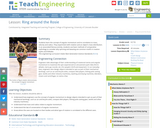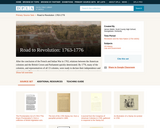
Students will use a model of the solar system to demonstrate the barycenter that exists between the earth and the sun.
- Subject:
- Earth Science
- Science
- Material Type:
- Activity/Lab
- Author:
- William Allred
- Carrie Robledo
- Date Added:
- 05/19/2021

Students will use a model of the solar system to demonstrate the barycenter that exists between the earth and the sun.

Students will use a model of the solar system to demonstrate rotation, revolution, kepler’s laws, Newton's laws, precession, nutation, seasons or tides.

This lesson will help students visualize barycenter and the relationship between the sun and the earth. Students will use a solar system model to demonstrate barycenter and see the effects of adding other planets into the mix.

This collection uses primary sources to explore leaders of Latin American revolutions. Digital Public Library of America Primary Source Sets are designed to help students develop their critical thinking skills and draw diverse material from libraries, archives, and museums across the United States. Each set includes an overview, ten to fifteen primary sources, links to related resources, and a teaching guide. These sets were created and reviewed by the teachers on the DPLA's Education Advisory Committee.

Students will use a model of the solar system to demonstrate rotation, revolution, Kepler’s laws, Newton's laws, precession, nutation, seasons or tides. They will use kapwing.com to create their own stop motion video.

Students learn the concept of angular momentum and its correlation to mass, velocity and radius. They experiment with rotation and an object's mass distribution. In an associated literacy activity, students use basic methods of comparative mythology to consider why spinning and weaving are common motifs in creation myths and folktales.

This collection uses primary sources to explore the events that led up to the American Revolutionary War. Digital Public Library of America Primary Source Sets are designed to help students develop their critical thinking skills and draw diverse material from libraries, archives, and museums across the United States. Each set includes an overview, ten to fifteen primary sources, links to related resources, and a teaching guide. These sets were created and reviewed by the teachers on the DPLA's Education Advisory Committee.

Students will first use CoSpace to create a virtual model of Newton's. Students will learn how to use CoSpace to create 3D virtual models. Next students will review concepts of rotation, revolution, seasons, tides, barycenter, precession, nutation by further exploring CoSpaces. Students will learn to write code to enable the earth to rotate and then revolve around the sun.

This collection uses primary sources to explore the Texas Revolution. Digital Public Library of America Primary Source Sets are designed to help students develop their critical thinking skills and draw diverse material from libraries, archives, and museums across the United States. Each set includes an overview, ten to fifteen primary sources, links to related resources, and a teaching guide. These sets were created and reviewed by the teachers on the DPLA's Education Advisory Committee.

Drawing and quartering, burning at the stake, tar and feathering, the pillory, the wooden wheel, the rack - all were devices or methods used for torturing humans conjured up over the ages. But in 18th Century Europe, a new movement, a new set of ideas was sweeping through the continent. A new type of thought, of “enlightenment,” was engaging the philosophes -- French philosophers or thinkers. These thinkers applied methods of science to understand society and to make improvements in it. With the application of reason, the philosophes believed government, law, and society could be reformed. According to the philosophes, the role of punishment and torture should be questioned too.